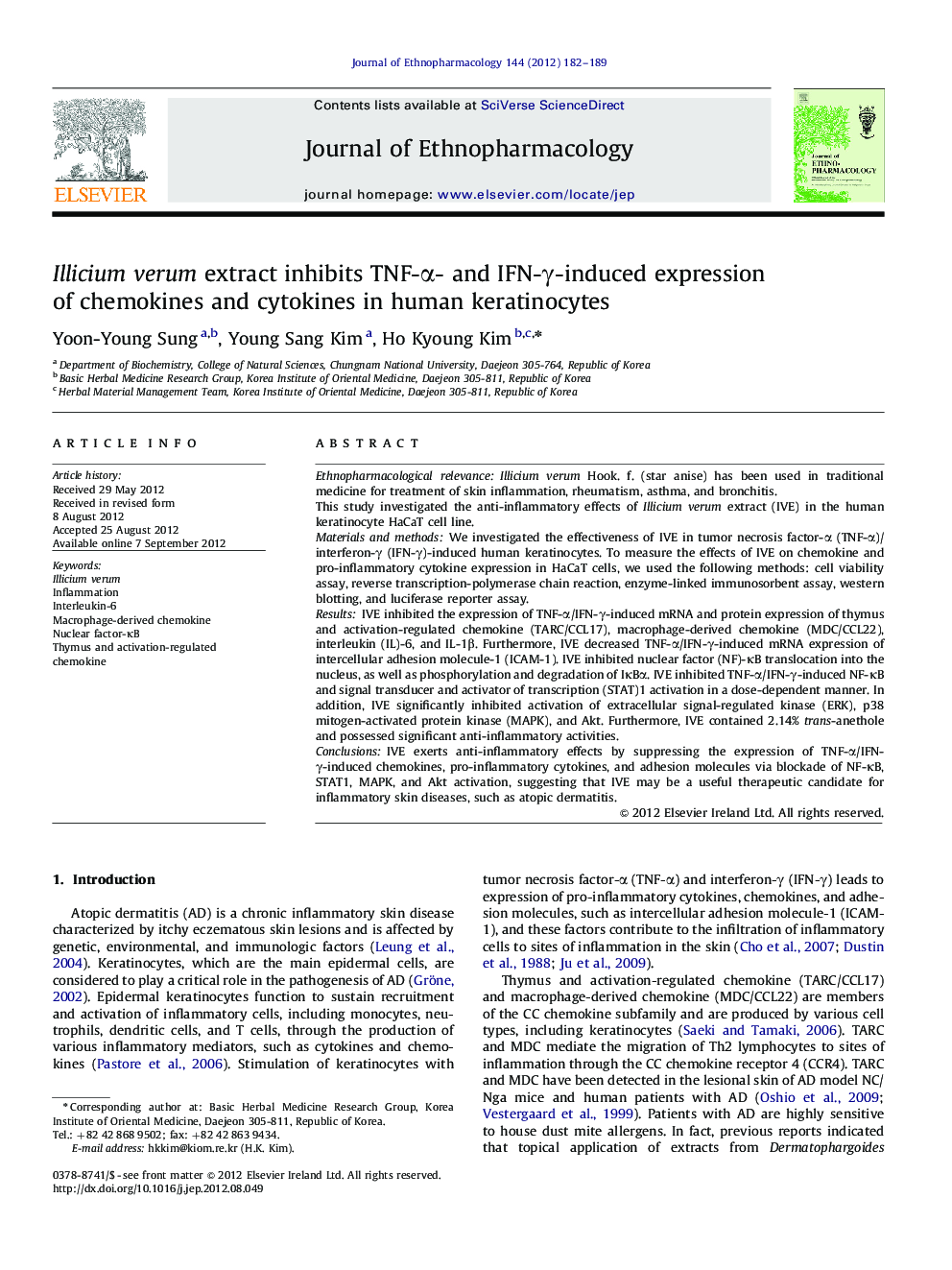| کد مقاله | کد نشریه | سال انتشار | مقاله انگلیسی | نسخه تمام متن |
|---|---|---|---|---|
| 2545572 | 1123964 | 2012 | 8 صفحه PDF | دانلود رایگان |

Ethnopharmacological relevanceIllicium verum Hook. f. (star anise) has been used in traditional medicine for treatment of skin inflammation, rheumatism, asthma, and bronchitis.This study investigated the anti-inflammatory effects of Illicium verum extract (IVE) in the human keratinocyte HaCaT cell line.Materials and methodsWe investigated the effectiveness of IVE in tumor necrosis factor-α (TNF-α)/interferon-γ (IFN-γ)-induced human keratinocytes. To measure the effects of IVE on chemokine and pro-inflammatory cytokine expression in HaCaT cells, we used the following methods: cell viability assay, reverse transcription-polymerase chain reaction, enzyme-linked immunosorbent assay, western blotting, and luciferase reporter assay.ResultsIVE inhibited the expression of TNF-α/IFN-γ-induced mRNA and protein expression of thymus and activation-regulated chemokine (TARC/CCL17), macrophage-derived chemokine (MDC/CCL22), interleukin (IL)-6, and IL-1β. Furthermore, IVE decreased TNF-α/IFN-γ-induced mRNA expression of intercellular adhesion molecule-1 (ICAM-1). IVE inhibited nuclear factor (NF)-κB translocation into the nucleus, as well as phosphorylation and degradation of IκBα. IVE inhibited TNF-α/IFN-γ-induced NF-κB and signal transducer and activator of transcription (STAT)1 activation in a dose-dependent manner. In addition, IVE significantly inhibited activation of extracellular signal-regulated kinase (ERK), p38 mitogen-activated protein kinase (MAPK), and Akt. Furthermore, IVE contained 2.14% trans-anethole and possessed significant anti-inflammatory activities.ConclusionsIVE exerts anti-inflammatory effects by suppressing the expression of TNF-α/IFN-γ-induced chemokines, pro-inflammatory cytokines, and adhesion molecules via blockade of NF-κB, STAT1, MAPK, and Akt activation, suggesting that IVE may be a useful therapeutic candidate for inflammatory skin diseases, such as atopic dermatitis.
Figure optionsDownload high-quality image (175 K)Download as PowerPoint slide
Journal: Journal of Ethnopharmacology - Volume 144, Issue 1, 31 October 2012, Pages 182–189